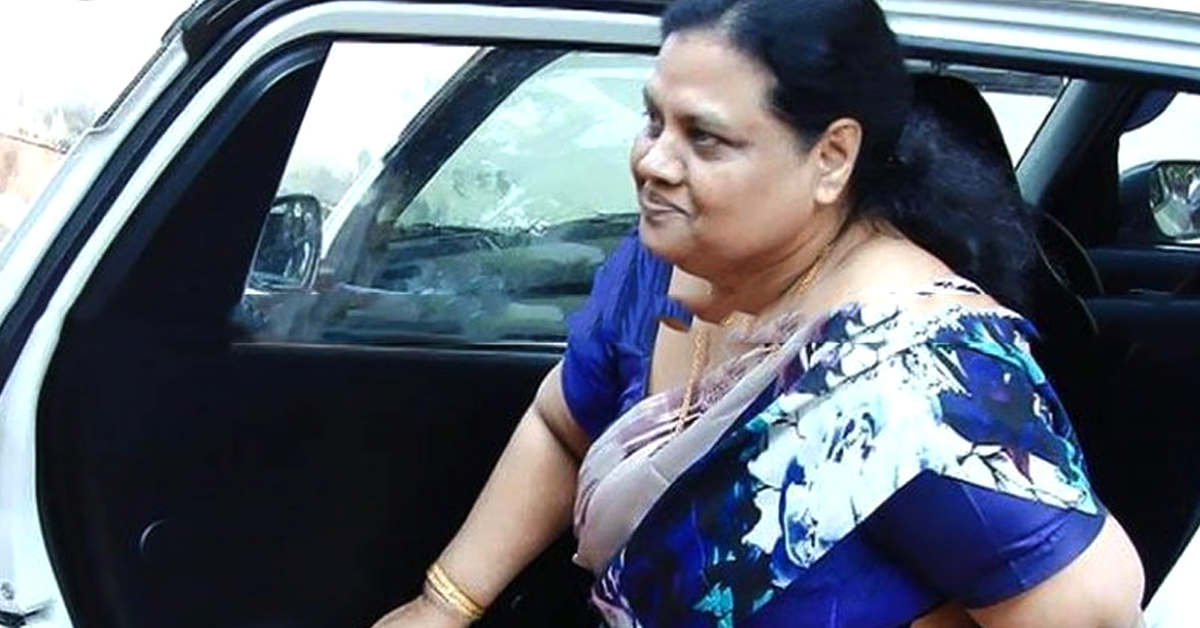The web series, 'Poacher', puts Thankachy, the woman facing charges of poaching and ivory trade, back on focus.

Kolkata Thankachy
The last time officials of the Kerala Forest Department saw Kolkata Thankachy was in 2019. She then disappeared without a trace.
A recent eight-part web series, Poacher, rekindled interest in Thankachy, who continued her family’s ivory trade, albeit illegally.
Born in Pettah, Thiruvananthapuram, Sindhu CS Babu earned the sobriquet Kolkata Thankachy after the ivory trade was banned in 1986, and made Kolkata the centre of the business she continued illegally. She was allegedly behind the gunning down of several elephants in Kerala’s Malayattoor Forest Division, and smuggling their tusks to Delhi and Kolkata.
The tusks were then used for making ivory sculptures, which were sold to the rich in India and abroad.
In 2019, the Department of Revenue Intelligence arrested her husband Sudheesh Chandrababu, and daughter Amitha from their Kolkata flat, forcing Thankachy to surrender in Kochi. However, she walked free since the Alipore magistrate court in Kolkata had granted her bail in the case.
The High Court of Kerala has now ordered the Kothamangalam Judicial First-Class Magistrate Court to disregard the Alipore court’s order and proceed legally when the woman appears before it or officials arrest and present her. The high court order was based on a petition by the Malayattoor Forest Division Forest Range Officer, filed in February 2024.
Thankachy’s disappearance five years ago had put the brakes on a high-profile inquiry into a case of smuggling ivory to China and Japan, as well as to Nepal and Bhutan via Kolkata.
In 2015, the prosecution filed a case against Thankachy for hunting elephants in the Malayattoor Forest Division and smuggling their tusks.
As many as 40 people have been arrested in the case that shocked conservationists across the country. The remaining 13 suspects are currently being probed.
Earlier, a team of Malayatoor forest range officials comprising beat officer Surrayya Basheer, range officer Sijo Samuel, and assistant conservator Manu Sathyan arrested Thankachy from her hideout in Kolkata with the help of the West Bengal police. Meanwhile, she had moved the Alipore magistrate court for bail, which was granted.
Thankachy cooperated with forest officials. She came to Kochi with her younger physically challenged daughter.
The forest officials requested her custody when Thankachy appeared before the Kothamangalam magistrate court on 28 March 2019. The court rejected the request, citing the bail order she had secured.
However, the court asked her to reappear on 20 April 2019, after the expiry of the bail period.
Before letting Thankachi off, the forest officials asked her to report to them the following day. That was the last time the forest officials saw or heard from her. She switched off her mobile phone and disappeared.
Meanwhile, her husband and daughter, who assisted in the trade, were placed under judicial custody.
The forest officials now claim that nobody seems interested in following up on the case now, despite hints suggesting that she might be living near Oachira in the Kollam district.
Thankachy’s family was traditionally involved in the ivory trade. They had shifted to Kolkata from Thiruvananthapuram.
Even after the illegal ivory trade was outlawed in 1986, they continued the business. Thankachi admitted during interrogation that they had obtained hundreds of tusks from Kerala, turned them into sculptures, and then smuggled them out.
Interestingly, the probe into the case abruptly stopped despite the suspected involvement of high-ranking individuals. The CBI, too, was reluctant to continue the investigation even after the Kerala government had referred the case to it.
Meanwhile, Thankachy’s husband Babu and daughter Amitha are undergoing trial after ivory sculptures and elephant tusks valued at ₹1.03 crore were seized from their house.
They told investigators that they procured elephant tusks and sculptures without the required paperwork and took them to Kolkata.
According to the charge sheet, the father-daughter duo had criminal antecedents and actively smuggled ivory from Kerala.
Train tickets found on them showed that they had travelled between Kottayam and Santragachi in Howrah.
Thankachy has been charged for heading a group of poachers, who killed 11 tuskers in the Thundathil forest region in 2015.
Anil, her son, was later apprehended on suspicion of receiving ivory, manufacturing idols covertly in different parts of Kerala, and smuggling them to Delhi and Kolkata.
Despite strict rules, elephant poaching was rampant in Kerala. The majority of bull elephants were exterminated between the mid-1970s and the mid-1980s. In the late 1980s, the bull elephant-to-cow sex ratio at the Periyar Tiger Reserve was 1:122.
Conservationists said between 336 and 388 elephants were murdered within 20 years. Thankachy appears to be the state’s final generation of poachers.

Apr 25, 2024

Apr 25, 2024

Apr 24, 2024

Apr 24, 2024

Apr 24, 2024

Apr 22, 2024